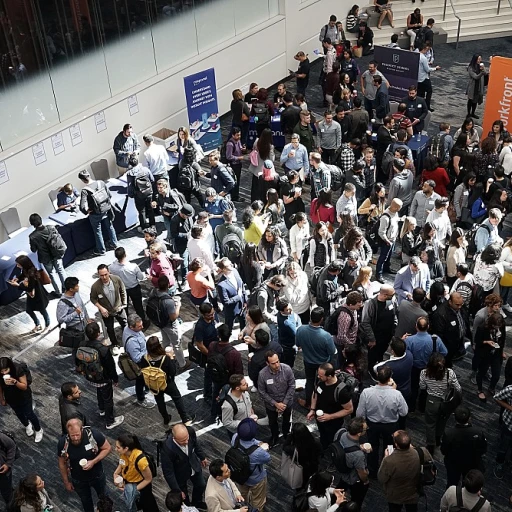Understanding Employee Referrals
Why Employee Referrals Matter
Employee referrals have become a cornerstone of talent acquisition strategies in many successful companies. They offer a unique avenue for recruiting top candidates through the networks of current employees. Referral programs can be immensely beneficial not only for the hiring process but also for maintaining a strong workplace culture. In essence, an employee referral is when an existing employee recommends a potential candidate for an open job position. This practice leverages the personal connections of your existing staff, creating a powerful and efficient recruiting tool. An effective employee referral program taps into a pool of candidates who might not be reached by traditional job boards. Employees generally recommend individuals they believe are qualified and will fit well within the company culture, ensuring a higher quality of potential hires. This process often results in a smoother onboarding experience and quicker time to productivity. Moreover, by involving employees in the recruitment process, companies can boost employee engagement and foster a sense of ownership within the team. Employees who are involved in referring candidates can feel more connected and valuable to the company. According to research from the Society for Human Resource Management (SHRM), employee referrals typically have higher retention rates compared to hires made through other recruitment channels. The reason is straightforward—employees tend to refer candidates who align with the company's values and work culture, reducing the risk of turnover. For organizations looking to integrate such a system seamlessly, understanding how to enhance recruitment tracking with HRIS can provide valuable insights that refine your employee referral process.The Benefits of Employee Referrals
The Strengths of Referral Programs in Recruitment
Harnessing the potential of employee referrals can significantly benefit a company's recruitment strategy. By leveraging the insights and networks of current employees, businesses can streamline their hiring process and find top talent more efficiently.- Quality Candidates: Referred candidates often bring higher quality as they are pre-vetted and vouched for by trustworthy employees. This can lead to a reduced time-to-hire and a more effective recruiting effort.
- Cost-Effective: Referral programs can be more cost-effective than traditional recruiting methods such as job boards or recruitment agencies. Many companies offer referral bonuses, but these costs are often lower than extensive advertising campaigns or agency fees.
- Enhanced Employee Engagement: Encouraging employee participation in the referral program can lead to improved employee engagement. When employees feel valued for their contributions to recruitment, it can enhance their overall satisfaction and connection to the company culture.
- Improved Retention: Employees who are recruited through referrals tend to have a better understanding of the company culture and are likely to integrate more seamlessly into the workplace. This can result in higher retention rates, reducing turnover costs.
- Cultural Fit: Referrals often lead to hires who are a better cultural fit for the organization. Employees are likely to recommend individuals who would complement the existing team and thrive in the company environment.
Integrating Referrals into HRIS
Seamlessly Integrating Referrals into Your HRIS
The integration of employee referrals into your Human Resources Information System (HRIS) can streamline your recruitment processes, making hiring more efficient and effective. This integration allows you to leverage the potential of referrals while maintaining organized and accessible data. Here’s how you can incorporate referrals into your HRIS effectively:
- Select Appropriate Referral Software: Utilize referral software that complements your existing HRIS. Compatible systems allow seamless data transfer, reducing the time and errors associated with manual data entry.
- Centralize Data: An HRIS acts as a centralized database for all referred candidates, ensuring that your recruitment team can quickly access and review potential new hires suggested by current employees. This centralization enhances the efficiency of the hiring process.
- Automate Processes: Automating the tracking and management of employee referrals through your HRIS helps in reducing administrative workload and speeds up the recruitment process. Automated alerts and updates keep both recruiters and employees informed about the status of referrals.
- Leverage Employee Engagement Tools: HRIS platforms often offer employee engagement tools that could boost participation in referral programs. Features like social media integration allow employees to easily share job postings, potentially reaching top talent quickly.
- Measure and Reward Performance: Integration with HRIS enables tracking of metrics related to your referral program. Monitoring these metrics helps in identifying the best employee contributors and ensuring they receive proper credit and potential referral bonuses.
By effectively integrating referrals into your HRIS, you not only enhance recruitment efficiency but also nurture a company culture that values and rewards employee contributions, further fostering a supportive and collaborative workplace environment.
Challenges in Managing Referrals
Navigating the Complexities of Referral Management
Managing employee referral programs can seem straightforward on the surface, but there are underlying complexities that HR departments often encounter. Implementing a successful referral system requires more than just asking employees to share job openings; it involves creating a structured process that ensures efficiency and fairness while maintaining a positive company culture.- Volume of Referrals: A major challenge is handling the sheer volume of referrals that can flood in for popular roles. Without the right software tools, tracking referred candidates and managing their applications can be cumbersome and time-consuming.
- Quality vs. Quantity: While it's beneficial to receive a large number of referrals, ensuring the quality of candidates remains crucial. Companies often need to balance between quantity and securing top talent, which requires clear criteria and solid evaluation systems.
- Maintaining Fairness: It's important to ensure that referrals are assessed impartially alongside external applicants. This helps to maintain the integrity of the hiring process and ensures that all candidates, referred or not, are evaluated based on merit.
- Referral Bonuses and Employee Motivation: Successfully integrating referral bonuses into the workplace without skewing employee motivation towards purely financial incentives can be tricky. Companies must maintain a healthy balance that encourages genuine recommendations while avoiding a "referral bonus chase."
- Program Awareness and Engagement: Achieving high employee engagement in the referral program often requires continuous communication. Educating current employees about referral programs, their benefits, and potential bonuses is key, using platforms like social media and internal job boards to spread awareness.
Best Practices for Referral Programs
Implementing Strategies for Successful Referral Programs
A well-structured referral program can significantly enhance your recruitment efforts, but implementing best practices is crucial to ensure the success of such programs. Current employees play a vital role in this process as they help attract top talent who can thrive in your company culture. Here's how you can optimize your employee referral program:- Clear Communication: It's essential to communicate the details of the referral program to all employees effectively. This includes explaining how the referral process works, any referral bonuses available, and guidelines for referring potential candidates. Clear communication ensures that employees understand how they can contribute to the recruiting process and the benefits they can derive.
- Integration with Referral Software: As highlighted earlier, integrating your employee referral system with recruiting software or HRIS can streamline the hiring process. Referral software can help automate initial screenings or tracking of referred candidates, saving time and resources. This allows human resources teams to focus on engaging with high-quality referrals more efficiently.
- Incentives and Recognition: Offering referral bonuses is a common practice to encourage employee participation. Additionally, recognizing employees who consistently refer quality candidates can enhance employee engagement and motivation. These incentives can vary from monetary bonuses to public recognition or even additional days off.
- Utilize Social Media: Encourage employees to leverage their social networks to share job openings and company culture insights. This not only widens the reach of your recruitment efforts but also gives potential candidates a glimpse of the workplace from an insider's perspective.
- Continuous Feedback Loop: Establishing a feedback loop will help HR teams gather insights from employees about the effectiveness of the referral programs. This can include discussions on issues faced during the referral process or suggestions for program improvement, thus ensuring the program continually evolves to meet company needs.
Case Studies and Real-World Examples
Real-World Success Stories
Understanding the impact of employee referrals in the workplace can be significantly enhanced by looking at real-world examples. Companies that have effectively integrated referral programs into their recruitment process have seen remarkable results. Here are a few insights from industry leaders:
- Tech Company A: This company revamped its referral program by using advanced recruiting software, which streamlined the process of tracking referred candidates. As a result, they saw a 30% increase in the quality of hires, with referred employees staying longer and performing better than those hired through traditional job boards.
- Retail Giant B: By offering attractive referral bonuses and leveraging social media for program promotion, this company increased employee engagement significantly. The referral program not only improved the hiring process but also strengthened company culture by involving current employees in the recruitment process.
- Financial Institution C: Implementing referral software tools allowed this organization to efficiently manage the influx of referrals. The software provided valuable insights into which employees were top referrers, enabling targeted recognition and rewards, which further motivated participation in the referral program.
Lessons Learned
These case studies highlight several best practices for referral programs:
- Utilizing software tools to streamline the referral process and track performance metrics.
- Incorporating attractive referral bonuses to incentivize participation.
- Engaging employees through social media and internal communication channels to promote the program.
- Recognizing and rewarding top referrers to maintain high levels of employee engagement.
By learning from these successful implementations, companies can optimize their own referral programs, ensuring they attract top talent while enhancing the overall recruitment experience.










